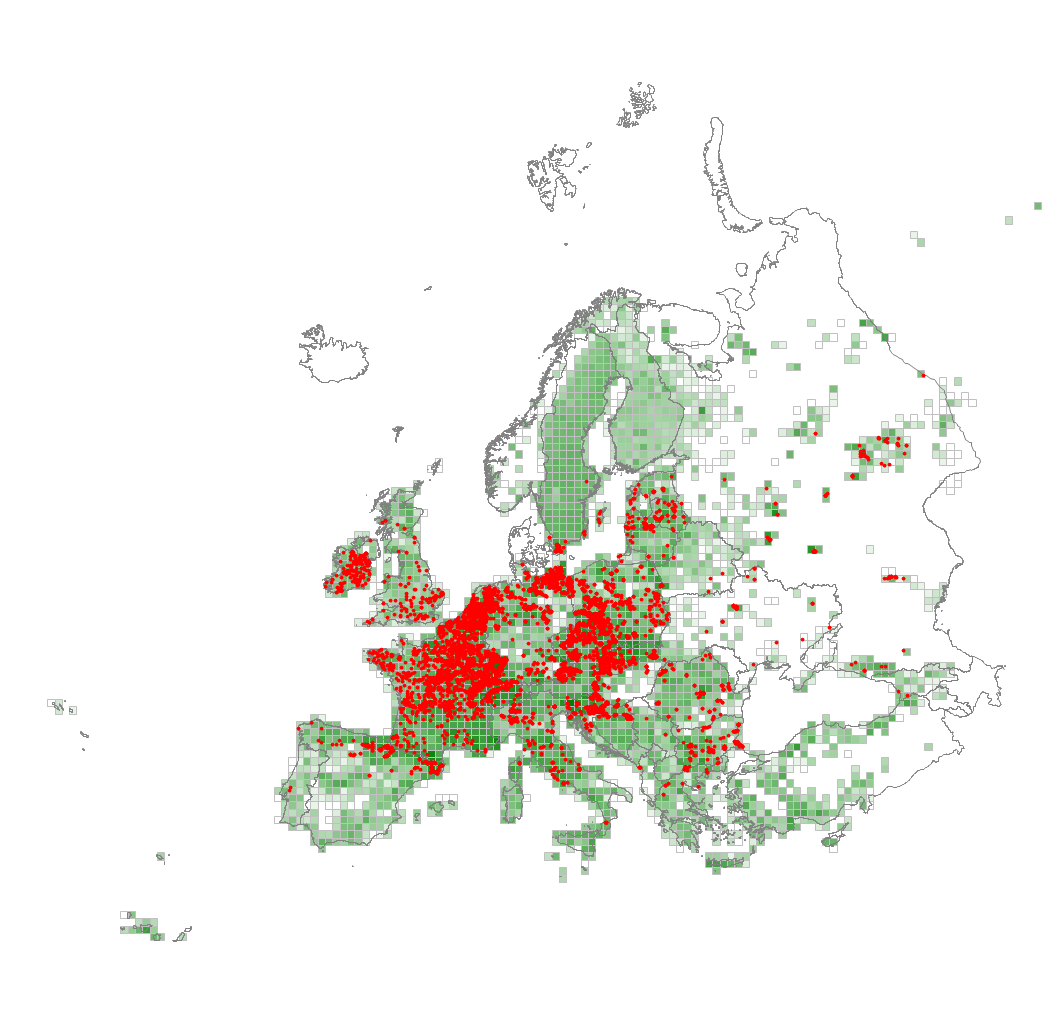T13 Temperate hardwood riparian forest
Mixed broadleaved forests typical of less-frequently flooded, well-aerated mineral soils on floodplains of the middle and lower reaches of major European rivers. The canopy in high-forest stands can be very tall and multi-layered and is typically dominated by various mixtures of Alnus glutinosa, Fraxinus angustifolia, Fraxinus excelsior, Populus alba, Populus canescens, Prunus padus, Quercus robur, Ulmus glabra, Ulmus laevis and Ulmus minor. There is typically an abundant and varied understorey, again often structurally complex, with a range of small trees, shrubs and lianas that are more typical of mesic deciduous forests (such as T1E Carpinus and Quercus mesic deciduous forest).
Chytrý M., Tichý L., Hennekens S.M., Knollová I., Janssen J.A.M., Rodwell J.S. … Schaminée J.H.J. (2020) EUNIS Habitat Classification: expert system, characteristic species combinations and distribution maps of European habitats. Applied Vegetation Science 23: 648–675. https://doi.org/10.1111/avsc.12519
Version 2025-10-03, https://doi.org/10.5281/zenodo.16895007.
For the official presentation of the EUNIS Habitat Classification from the European Environment Agency, please see: EUNIS Terrestrial Habitat Classification 2021. The FloraVeg.EU presentation may show modifications and partial updates to the habitat classification.

1.jpg)
2.jpg)
3.jpg)
4.jpg)
5.jpg)
6.jpg)
7.jpg)
8.jpg)
9.jpg)